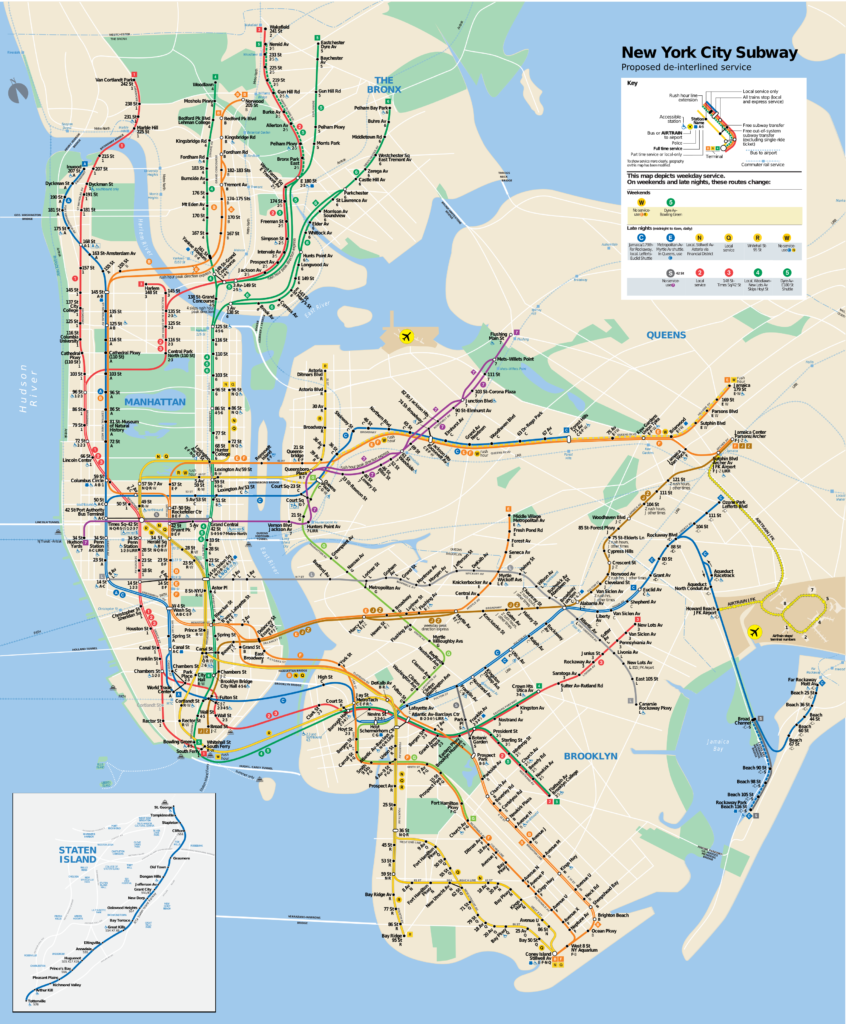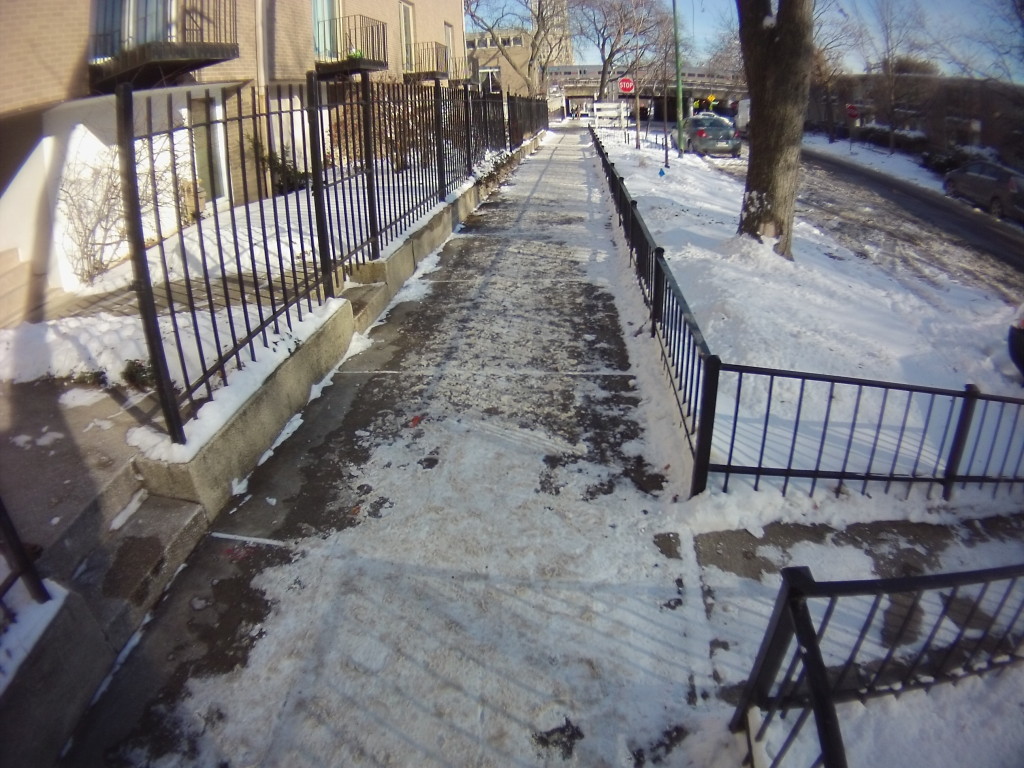First, apologies for the crayon, but I hope to make a point.
Several recent power outages have each led to a nearly complete loss of service to the B-division of the New York City Subway. Even on a day-to-day basis, the subway is scourged by inconsistent service and crowded trains. The MTA is using this recent publicity to push for upgrading the subway’s signal infrastructure, making that very expensive and long-term solution seem like the way forward. While signal upgrades have merit, there is a much simpler way to avoid propagated delays in the subway: de-interlining, or as Alon Levy puts it, eliminating reverse branching. If the B, D, and E never crossed paths with other subway lines, the power outage at 7th Ave/53rd would have never affected the entire subway network. In addition to preventing system meltdowns, Alon’s posts point out that de-interlining allows for simpler scheduling, easier wayfinding, more frequent trains, reduced wear on switches, and reduced bunching of trains.
Such a de-interlined service could look like:


